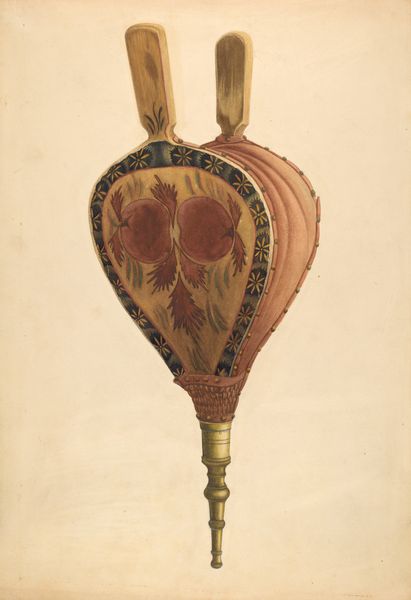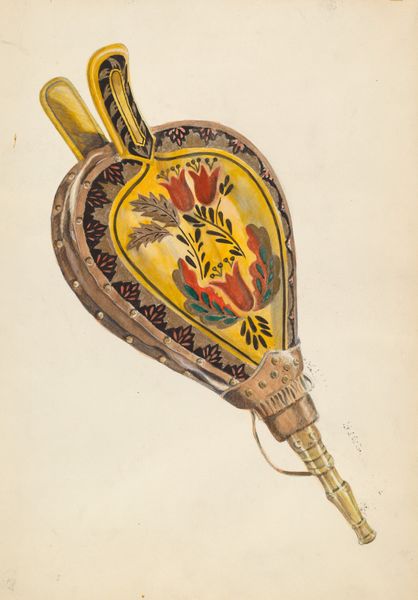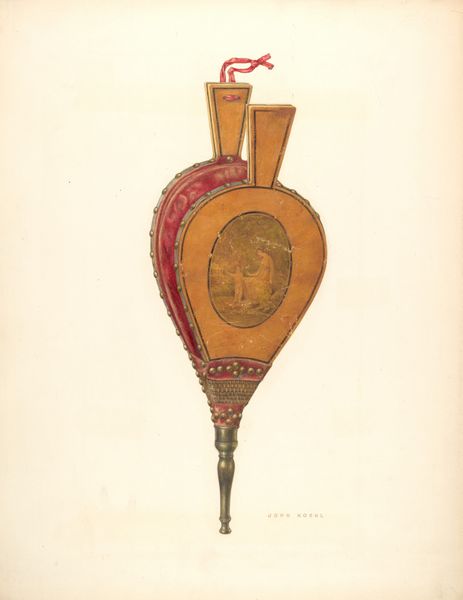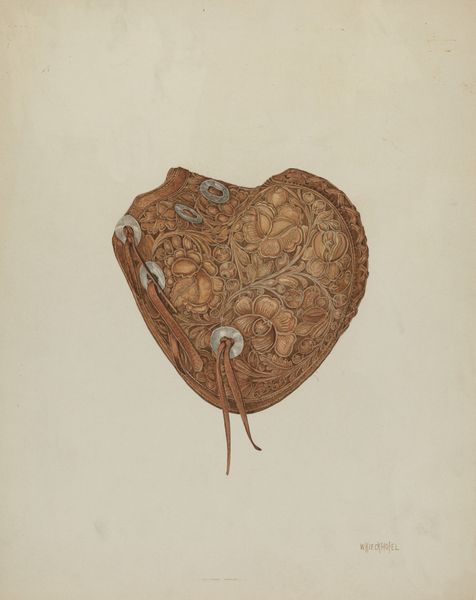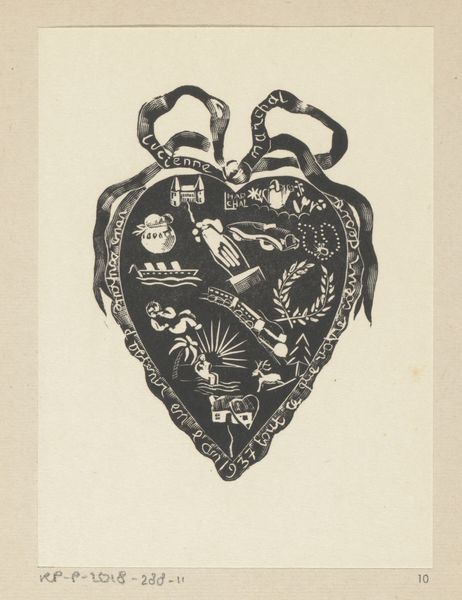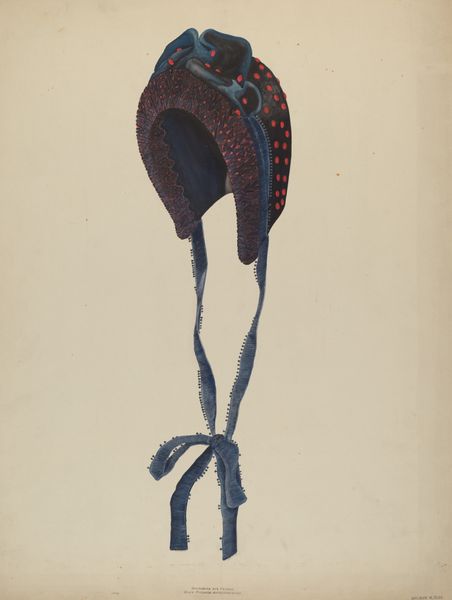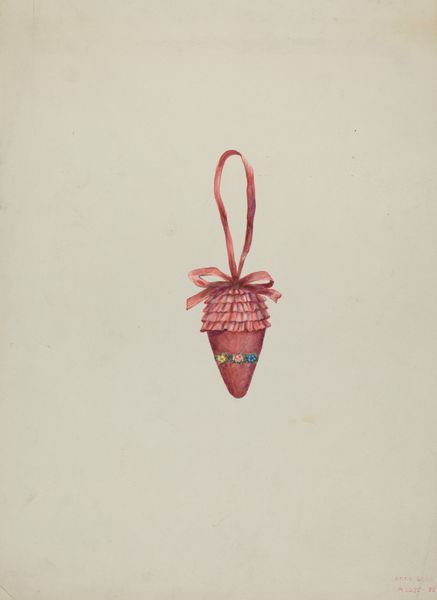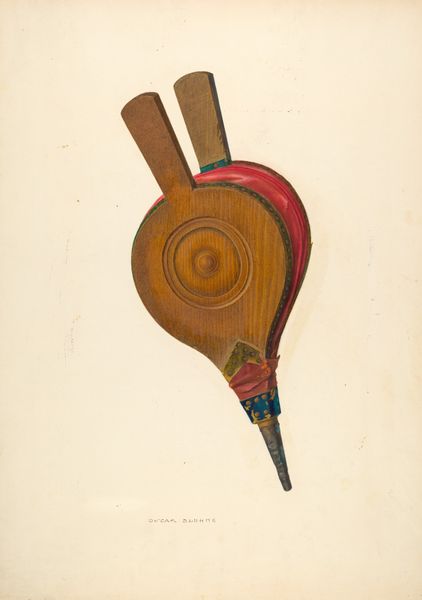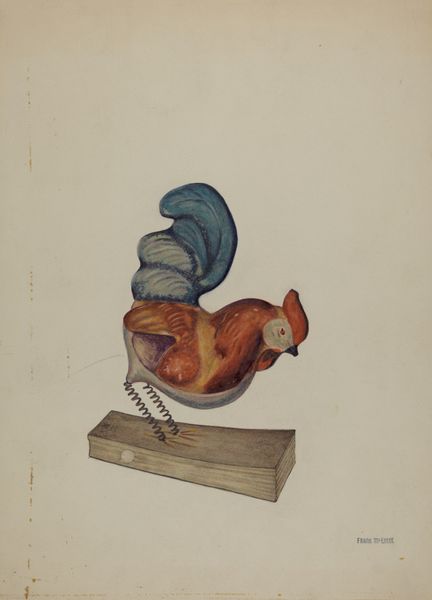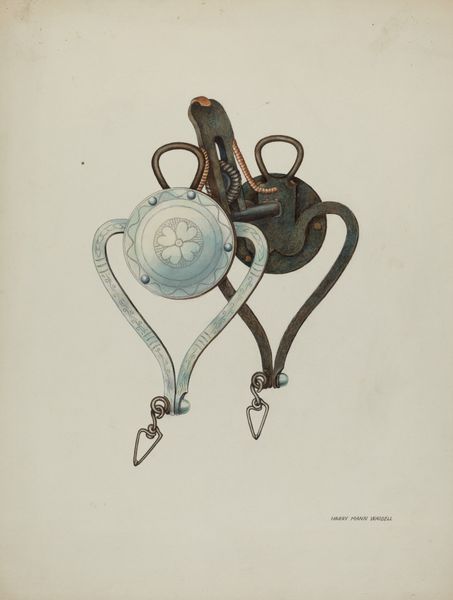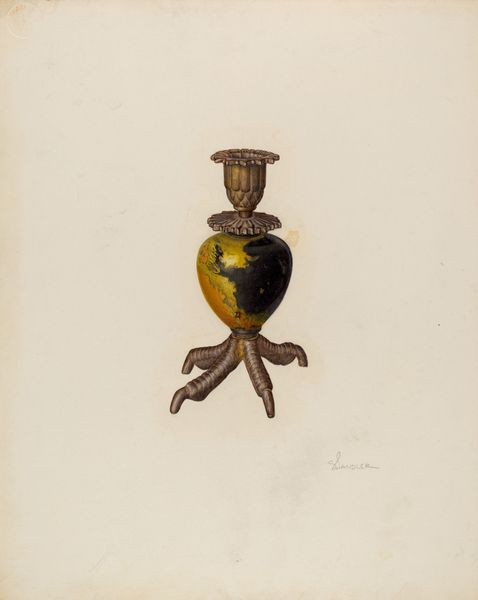
drawing, watercolor
#
drawing
#
water colours
#
watercolor
#
coloured pencil
#
watercolor
Dimensions: overall: 50.1 x 38.1 cm (19 3/4 x 15 in.) Original IAD Object: 17 1/4" long; 7" wide
Copyright: National Gallery of Art: CC0 1.0
Curator: So, we have before us Charlotte Angus's "Bellows," a watercolor drawing from around 1937. Editor: That's right. My first thought is it has this very craftcore, folk-art feel, rendered quite precisely. What stands out to you? Curator: Immediately, the subject – a utilitarian object – raised to the level of fine art strikes me. Consider the bellows itself: leather, wood, metal, each material sourced, worked, assembled. And then embellished. How does elevating a tool, normally associated with the labor of maintaining a fire, speak to ideas of class and artistic production in the 1930s? Editor: I see what you mean. It’s not just representing the object, it's celebrating its creation. Do you think Angus is making a statement about the value of craftsmanship during a time of mass production? Curator: Precisely. The decoration, that folksy floral design, could be interpreted as a rebellion against the coldness of industrial design. Someone, likely, spent a painstaking amount of time on a tool. Where was Angus in 1937? How was she viewing societal structure? Editor: I can see that connection. The drawing itself— the watercolors and colored pencil— add another layer, mimicking and elevating the original labor. Curator: Exactly. What does the choice of those specific media—accessible, traditionally “domestic”—tell us? Editor: That’s a good point! Maybe watercolor itself is being reconsidered, taken out of the realm of hobby painting and made "high art." I never considered the value judgement we give particular mediums. Curator: This is exactly the point. The material reality and social context inform the artistic value, challenging those preconceived boundaries. Hopefully you agree? Editor: Definitely, thinking about the work in this way gives it a totally new context, especially now, as we reconsider materiality in contemporary art. Curator: Indeed, by understanding production, labor and resources in art, hopefully we can begin to move away from only valuing a piece by it's visual aesthetics.
Comments
No comments
Be the first to comment and join the conversation on the ultimate creative platform.
